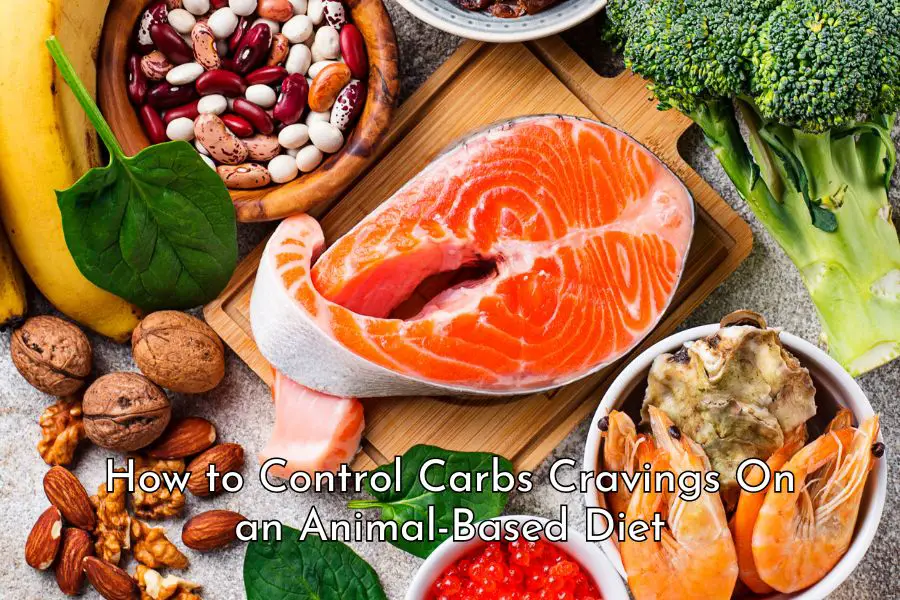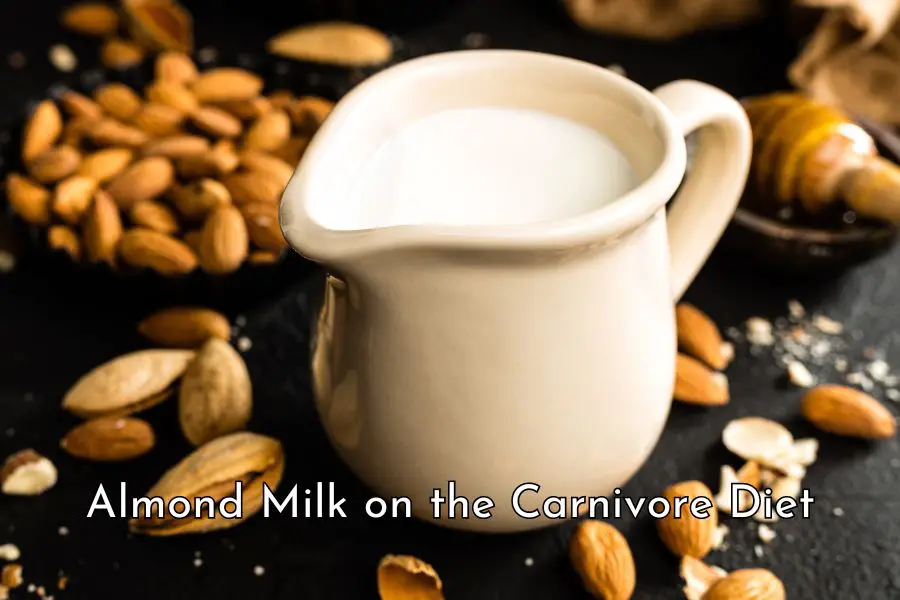A concern that many people have about the carnivore diet is elevated cholesterol levels which have been long associated with an increased risk of coronary heart diseases.
It is likely that a carnivore diet like other low-carb diets may have the effect of raising your cholesterol levels.
However, this post will show you that an increase in cholesterol levels, especially the “bad” low-density lipoprotein cholesterol (LDL-C) due to this diet should not automatically become a concern for you. This is because LDL-C is not a good indicator of cardiovascular disease risk and the number of LDL particles, especially the number of smaller, denser LDL particles is a better one.
Furthermore, research shows that low-carb diets may increase LDL particle size and decrease the number of small, dense LDL particles, both of these changes indicate a reduced risk of cardiovascular diseases.
The remainder of the post covers the following:
- What is cholesterol?
- The vital roles of cholesterol
- How is cholesterol measured?
- Desirable cholesterol levels
- Health authorities’ advice on maintaining a healthy cholesterol profile
- What impact does the carnivore diet have on your cholesterol levels?
- Why your cholesterol may increase on the carnivore diet?
- Should you be worried about high LDL cholesterol on the carnivore diet?
- Why has cholesterol been vilified for so long?
What is cholesterol?
Cholesterol is a waxy fat-like substance that is found in blood and all the cells in your body.
Your body produces all the cholesterol that it needs.
However, you can also get cholesterol from animal-based foods such as meat, fat, eggs, poultry, dairy, and seafood.
Plant-based food does not contain any cholesterol.
The vital roles of cholesterol
Cholesterol is essential for human life. Without it, we will all collapse and die instantly.
Cholesterol is an essential component of the cell membrane and contributes to the structural makeup of the membrane as well as modulates its fluidity. [1]
Every single cell in your body contains cholesterol. We simply cannot survive without cholesterol.
Cholesterol functions as a precursor molecule in the synthesis of vitamin D, steroid hormones, and sex hormones. [2]
Cholesterol is also a constituent of bile salt used in digestion to facilitate the absorption of fat-soluble vitamins A, D, E, and K. [3]
Because of its critical role in the proper functioning of the brain, your brain is the most cholesterol-rich organ, it contains about 20% of the whole body’s cholesterol. [4]
How is cholesterol measured?
Because cholesterol is not water-soluble, your body uses lipoproteins to transport it around the body so that it can perform the above functions. [5]
Lipoproteins are protein molecules whose role is to transport fat in the body and they contain cholesterol and triglycerides. [6]
There are seven different classes of lipoproteins but when you get a blood test done to determine your cholesterol profile, cholesterol in two types of lipoproteins is usually reported: low-density lipoprotein (LDL) and high-density lipoprotein (HDL). [7]
In the United States, cholesterol levels are measured in milligrams (mg) of cholesterol per deciliter (dL) of blood. In Europe and some other countries, cholesterol levels are measured in millimoles per liter (mmol/L).
You usually need to fast for 8 to 12 hours before your cholesterol test so that the levels of cholesterol and fat particles in your blood are not affected by the food you consume immediately before the test.
LDL
Low-density lipoproteins (LDL) are the main cholesterol transporters in the body and they transport cholesterol from the liver to the tissues and cells in the body. [8]
Medical professionals and medical literature often refer to LDL as the “bad” cholesterol because high levels of LDL have been associated with the buildup of cholesterol in the arteries. We will discuss this in more detail later on.
Below are the current LDL categories: [9, 10]
| LDL cholesterol Level | LDL cholesterol category |
|---|---|
| Less than 100mg/dL (2.6 mmol/L) | Optimal |
| 100-129mg/dL (2.6-3.3 mmol/L) | Near optimal/above optimal |
| 130-159 mg/dL (3.4-4.1 mmol/L) | Borderline high |
| 160-189 mg/dL (4.1-4.9 mmol/L) | High |
| 190 mg/dL and above (4.9 mmol/L) | Very High |
HDL
High-density lipoproteins (HDL) have the opposite role which is to take excess cholesterol from peripheral tissues back to the liver for excretion. [11]
HDL is often referred to as the “good” cholesterol because it does the opposite of LDL and is thought to reduce the formation of plaque in the arteries.
Triglycerides
In addition to LDL, HDL and total cholesterol, triglyceride levels are often reported together with your cholesterol levels to give an overall lipid profile.
Triglycerides are a type of fat in the blood which comes from fats in your diet or are converted from excess calories consumed. [12]
Epidemiological evidence indicates an association between high levels of triglycerides and an increased risk of metabolic syndromes and heart diseases.
Desirable cholesterol levels
Below are the current “desirable” cholesterol and triglyceride levels according to the CDC: [13]
| Total cholesterol | Less than 200 mg/dL |
|---|---|
| LDL (“bad”) cholesterol | Less than 100 mg/dL |
| HDL (“good”) cholesterol | Greater than or equal to 60 mg/dL |
| Triglycerides | Less than 150 mg/dL |
In summary, the current general view of healthcare professionals is that low LDL cholesterol and triglyceride levels and high HDL cholesterol levels are good for your health.
However, it is important to note that these “desirable” cholesterol levels are set in the context of “average” diets of the general population which are more likely to be omnivore and high-carb diets. They, therefore, may not be that relevant to the carnivore diet community.
However, giving them the benefits of the doubt, we will assume that they are relevant and assess here whether elevated cholesterol levels on the carnivore diet should be a genuine concern.
Health authorities’ advice on maintaining a healthy cholesterol profile
Given the current view that high cholesterol levels are bad for health, the current health advice for the general population is to avoid fatty foods, especially those that are high in saturated fat and are usually also high in cholesterol.
To maintain healthy cholesterol levels, government health authorities recommend that you: [14, 15, 16, 17]
- Cut down on fatty food, especially foods that are high in saturated fat like cheese, fatty meats, butter, cream, lard, ghee, coconut oil, palm oil, and dairy desserts
- Eat more foods that are low in saturated fat, trans fat, sodium and added sugars (e.g. lean meat; seafood; fat-free or low-fat milk, cheese, and yogurt; whole grains; and fruits and vegetables)
- Eat foods naturally high in fiber (e.g. oatmeal and beans) and unsaturated fats (e.g. avocado, nuts, seeds, and olive oil)
- Lose weight
- Be physically active
- Stop smoking
- Cut down on alcohol.
A carnivore diet obviously goes against the above health advice, especially in relation to the diet part, because many animal-based foods are high in saturated fat and cholesterol.
In the section below, we will look at the impact that the carnivore diet has on cholesterol.
What impact does the carnivore diet have on your cholesterol levels?
Based on available evidence, people on the carnivore diet generally experience an increase in total cholesterol, LDL and HDL cholesterol and a decrease in triglyceride levels.
Harvard study
A recent survey on the carnivore diet experience of 2029 people was carried out by a team of researchers from Harvard Medical School and other institutions.
While 3883 people participated in the survey, in the final findings, only 2029 participants who had been on the carnivore diet for at least 6 months were included.
A subset of people surveyed who had diabetes also reported their blood test results.
Their self-reported lipid profiles pre and post-carnivore diet are reproduced below.
| Median value | Pre-diet | Carnivore diet | Difference |
|---|---|---|---|
| Weight (kg) | 95 | 82 | -13 |
| BMI (kg/m2) | 30.8 | 26 | -4.8 |
| Total cholesterol (mg/dl) | 214 | 253 | 39 |
| LDLc (mg/dl) | 135 | 169 | 34 |
| HDLc (mg/dl) | 56 | 66 | 10 |
| Triglycerides (mg/dl) | 109 | 74 | -35 |
As you can see in the above table, while those participants lost weight and improved their BMIs, their total cholesterol increased to 253 mg/dL which is considered an “unhealthy” level. As previously shown, total cholesterol of less than 200 mg/dL is viewed as “desirable”.
They also reported an increase in both LDL and HDL levels.
While an increase in HDL (the “good” cholesterol) is considered a good sign, an increase in LDL (the “bad” cholesterol”) is considered a bad sign.
In addition, their triglyceride or blood lipid levels also dropped to 74 mg/dL which is considered a good sign.
In summary, while their HDL and triglyceride levels improved and were at optimal levels when surveyed, their LDL and total cholesterol were elevated and would be a concern for many healthcare professionals.
Some low-carb diet studies also find an increase in LDL cholesterol levels. We will look at a couple of studies as examples and a few meta-analyses below.
Low carb diets
Buren et al (2021)
In a randomized controlled feeding trial by Buren et al (2021), 24 young, healthy, normal-weight women were put on a 4-week ketogenic diet (4% carbohydrates; 77% fat; 19% protein). [18]
While their blood glucose and insulin decreased, their LDL, HDL and non-HDL cholesterol all increased. Every woman in the study experienced an increase in LDL cholesterol with a treatment effect of 1.82 mM. [19]
Bhanpuri et al (2018)
In an open label, non-randomized, controlled study involving 262 participants with type 2 diabetes, it was found that low-carb diets resulted in an increase in HDL and LDL cholesterol levels. [20]
However, total LDL particles and small LDL particles decreased while LDL particle size increased. [21]
Note that LDL cholesterol is a measurement of the cholesterol mass within LDL particles and is commonly reported in cholesterol tests.
Some argue that LDL particles and their sizes are more important in assessing cardiovascular disease risks than LDL cholesterol levels per se. We will look at this issue more closely later on.
Gjuladin-Hellon et al (2019)
A systematic review and meta-analysis on the impact of carb-restricted diets on LDL and cardiovascular risk by Gjuladin-Hellon et al (2019) found that low-carb diets actually improved lipid profiles compared to low-fat diets. [22]
In particular, low-carb diets showed significant increases in HDL cholesterol and decreases in triglycerides. While a pooled analysis found LDL levels were elevated relative to low-fat diets, they were found to be clinically insignificant. [23]
Dong et al (2020)
A meta-analysis of 12 randomized studies found that, overall, low-carb diets have a beneficial effect on cardiovascular risk factors. [24]
Low-carb diets led to weight loss, a decrease in blood pressure and a decrease in triglyceride levels. Total cholesterol, HDL and LDL cholesterol also increased but the increase in LDL cholesterol was found to be insignificant.
Falkenhain et al (2021)
A meta-analysis of 38 randomized trials including a total of 1785 participants found that low-carb diets increased LDL particle size and decreased the numbers of total LDL and small LDL particles. [25]
There was also a shift from small dense to larger LDL subclasses. This is understandable because one of LDL’s roles is to transport triglycerides to peripheral tissues for fuel. With the increase in fat intake in low-carb diets, an increase in large LDL is expected as well.
Summary
In summary, some people on a high-fat low-carb diet like the carnivore diet may experience an increase in “good” HDL cholesterol, a decrease in triglycerides but also an increase in the “bad” LDL cholesterol.
With regard to LDL, some studies find that while LDL particle sizes increased, the numbers of total LDL particles and small LDL particles actually decreased.
Below we will look at why LDL might be elevated on the carnivore diet and other high-fat low-carb diets.
Why your cholesterol may increase on the carnivore diet?
The main reason that your total cholesterol, HDL and LDL increase on the carnivore diet is the fact that your body switches from burning carbohydrates to burning fats for fuel.
Because there is very little amount of carbohydrates on the carnivore diet or low-carb diets, the liver has to convert a lot of fatty acids into ketones for your body to use them as a fuel source.
When fatty acids enter the liver, they are converted to acetyl-CoA. Acetyl-CoA can be used as energy in the mitochondria but can also be converted to HMG-CoA. [26]
Because HMG-CoA involves in the synthesis of both cholesterol and ketone formation, accordingly, by design, when you are in ketosis, both ketone and cholesterol productions go up. Therefore, you are likely to see your total cholesterol, HDL and LDL cholesterol increase.
Some people also experience an increase in cholesterol levels while fasting because the same process happens: after glycogen store has been depleted, the liver begins to break down fatty acids for energy and, by design, the liver will synthesize more cholesterol.
Adrenal glands, intestines and reproductive organs also produce cholesterol but liver is the primary site of cholesterol synthesis.
As mentioned above, while an increase in HDL is considered a “good” sign, an elevated LDL is generally considered a “bad” sign because it has been traditionally associated with an increased risk of coronary heart disease.
This may not necessarily be the case as explained in the section below.
Should you be worried about high LDL cholesterol on the carnivore diet?
As mentioned above, cholesterol plays many vital roles in the human body. It is so important that, without it, we will diet instantly.
So, the question is why would mother nature create something that is so important but also deadly for us? And, if your LDL cholesterol on the carnivore diet turns out to be higher than some “desirable” level, should you be worried?
The answer is no.
An increase in LDL cholesterol levels on low-carb high-fat diets or the carnivore diet should not immediately become a concern because research has shown that the number of LDL particles rather than LDL cholesterol is a better indicator of the risk of heart diseases.
While LDL particle sizes increased on low-carb high-fat diets (which is probably the reason for the increase in total LDL cholesterol), the numbers of total LDL particles and small LDL particles actually decreased. Research has shown that both changes, in fact, indicate a decrease in the risk of cardiovascular diseases.
We will look at the research evidence below but first, let’s look at the difference between LDL cholesterol and LDL particles.
LDL cholesterol vs LDL particle number
LDL cholesterol (LDL-C) is a measure of the amount of cholesterol that LDL particles contain.
LDL particle (LDL-P) number is simply the number of low-density lipoprotein particles in your blood.
Although LDL cholesterol is commonly used to assess cardiovascular risk, it is often estimated rather than directly calculated due to cost.
And this could be where a potential problem arises because (i) LDL particles can vary in size, and (ii) LDL particles may not carry the same amount of cholesterol.
The number of LDL particles is a better indicator of cardiovascular disease risk than LDL cholesterol
In a large study (Framingham Offspring Study) involving 3066 middle-aged participants, both LDL cholesterol, non-HDL cholesterol and LDL particle number were measured. [27]
The participants were followed for around 15 years and cardiovascular disease (CDV) events were recorded.
It was found that LDL particle number was related more strongly to cardiovascular disease incidence than LDL cholesterol or non-HDL cholesterol levels.
Subjects with a low level of LDL particles (<25th percentile) had a lower CVD event rate (59 events per 1000 person-years) than those with an equivalently low level of LDL cholesterol (81 events per 1000 person-years).
It is clear from this study that the number of LDL particles is a better indicator of cardiovascular risk than LDL cholesterol per se and that the lower number of LDL particles, the better.
A systematic review by Ravnskov et al (2016) published in the British Medical Journal also found a lack of an association or an inverse association between LDL cholesterol and mortality in the elderly. [28]
Smaller and denser LDL particles are what promote the buildup of plaque in the arteries
Furthermore, not all LDL particles are the same.
Smaller and denser LDL particles, in particular, are what promotes the formation of plaque in the arteries because they have greater arterial entry and retention and are more prone to oxidation. [29]
Studies show that people with mostly small, dense LDL particles have a higher risk of coronary heart disease regardless of their total LDL cholesterol, whereas those with mostly large LDL particles have a lower risk. [30, 31, 32, 33]
Low-carb high-fat diets result in a decrease in small LDL particle number indicating a decrease in cardiovascular disease risk
As shown in the literature review above, a meta-analyses of 38 randomized trials by Falkenhain et al (2021) found that low-carb diets decreased the numbers of total LDL and small LDL particles and increased LDL particle size. [34]
Similarly, a review by Froyen (2021) found that higher fat diets decreased the number of small, dense LDL particles and/or increased the number of large and buoyant LDL particles compared to lower fat diets. [35]
Both of these changes indicate a reduced risk of cardiovascular diseases.
Research has shown that small, dense and oxidized LDL particles are those that contribute to the plaque formation in the inner lining of the arteries and may directly associate with the risk of cardiovascular diseases. [36, 37, 38]
Therefore, a decrease in the number of small LDL particles on a low-carb diet potentially means a lower risk of heart diseases.
Large LDL particles, however, have been found to be not associated with an increase risk of heart diseases.
In a study involving 2072 men who were followed for a period of 13 years, it was found that large LDL sub-fractions were not associated with an increased risk of CVD events but small LDL sub-fractions were. [39]
Accordingly, an increase in LDL particle sizes (which is likely to be the primary cause of the increase in LDL cholesterol on low-carb high-fat diets) indicates a reduced risk of heart diseases.
In summary, the number of LDL particles is a better indicator of cardiovascular disease risk than LDL cholesterol level itself. Low-carb diets and a carnivore diet may result in an increase in LDL particle size and a decrease in the number of small LDL particles, both of which indicate a lower risk of cardiovascular diseases.
While the above studies are for low-carb diets, the change in cholesterol profiles of people on the carnivore diet are very similar to those on low-carb diets.
Why has cholesterol been vilified for so long?
As you can see above, high cholesterol and high LDL may not necessarily be bad for your health.
You might wonder why you’ve been told all your life that cholesterol is bad for you and that you should avoid all cholesterol-rich food?
It all started with a flawed observational study of seven countries by Ancel Keys in 1952 which shows an association between saturated fat consumption and risk of heart disease.
However, Ancel Keys left out 15 countries that did not support his hypothesis. When all 22 countries were included, no such association is found.
If you are interested, please check out the series Ancel Keys’ Cholesterol Con by professor Tim Noakes.
Available evidence so far does not support the argument that dietary cholesterol leads to the development of cardiovascular diseases. [40]
As a result, the the recommendation to restrict dietary cholesterol to 300 mg/day had been removed from the 2015–2020 Dietary Guidelines for Americans. [41]
Conclusion
On the carnivore diet as well as other low-carb diets, you are likely to see a decrease in triglyceride levels and an increase in total cholesterol, HDL and LDL cholesterol.
While a decrease in triglycerides and an increase in HDL cholesterol are considered a good sign, an increase in LDL cholesterol has been traditionally viewed as a bad sign because it has been directly associated with plaque formation in the arteries.
However, available evidence shows that LDL cholesterol level per se is not a good marker of the risk of coronary heart disease but rather the number of small, dense LDL particles is.
Smaller, denser or oxidized LDL particles are what promote the build-up of plaque in the arteries.
Research shows that, on low-carb diets, the number of small, dense LDL particles tend to go down which indicates that the carnivore diet has beneficial effect on heart health, not the reverse.
If you find this post helpful, please consider sharing this post and my site with your family, friends, and followers. That would be much appreciated. Please also check out my library of articles on the carnivore diet here which is updated regularly.
Disclaimer: The information in this post is for reference purposes only and not intended to constitute or replace professional medical advice. Please consult a qualified medical professional before making any changes to your diet or lifestyle.
Photo credit: Gilmer Diaz Estela on Pexels





